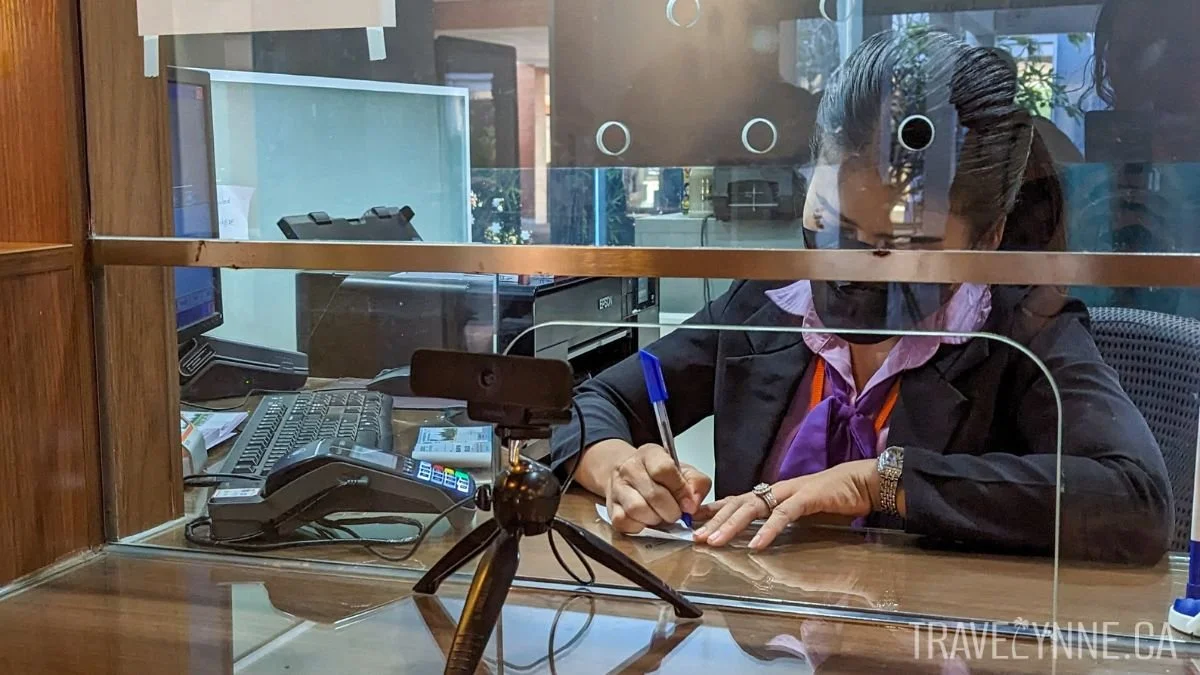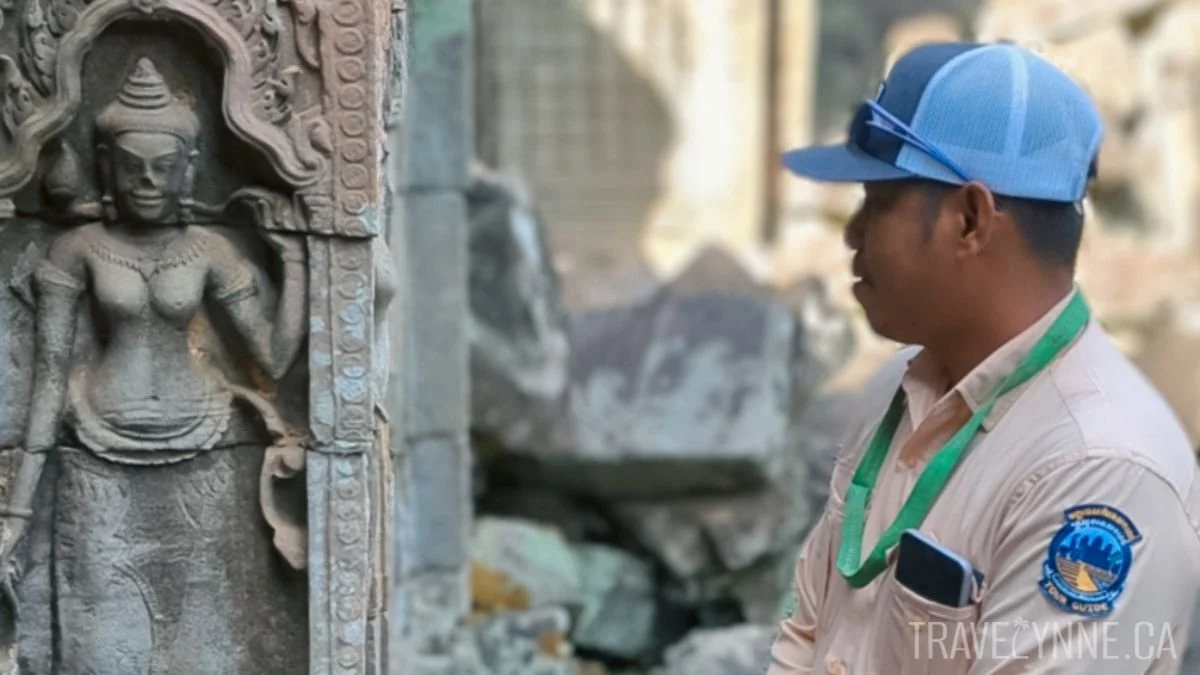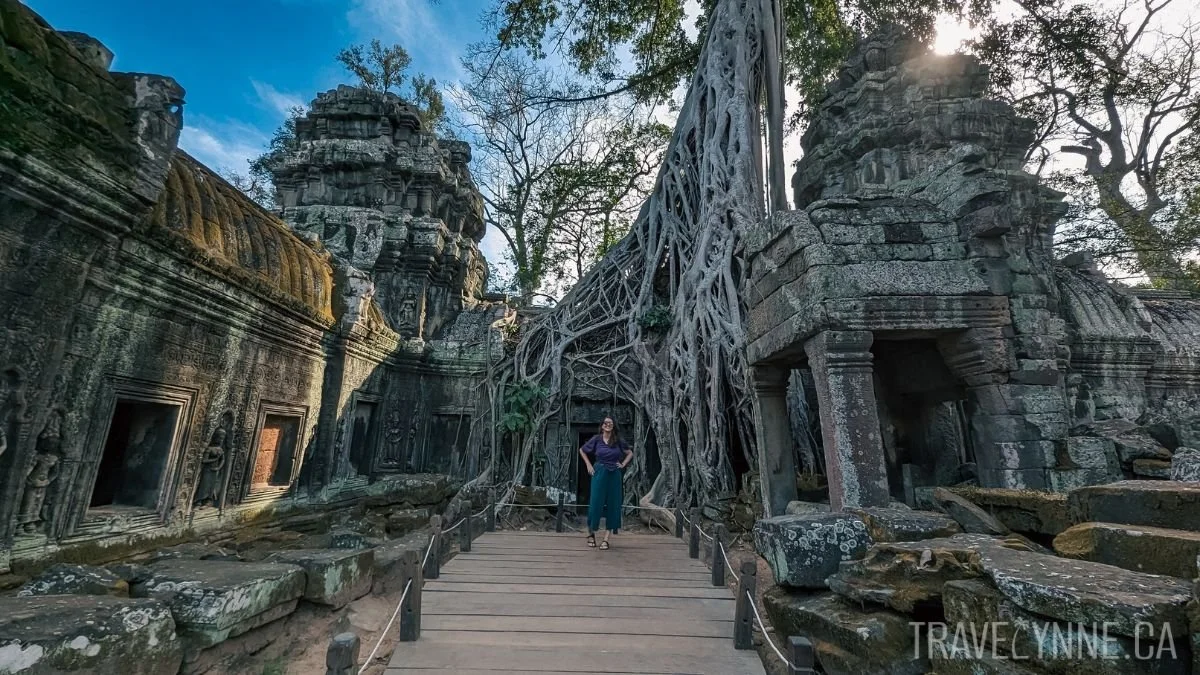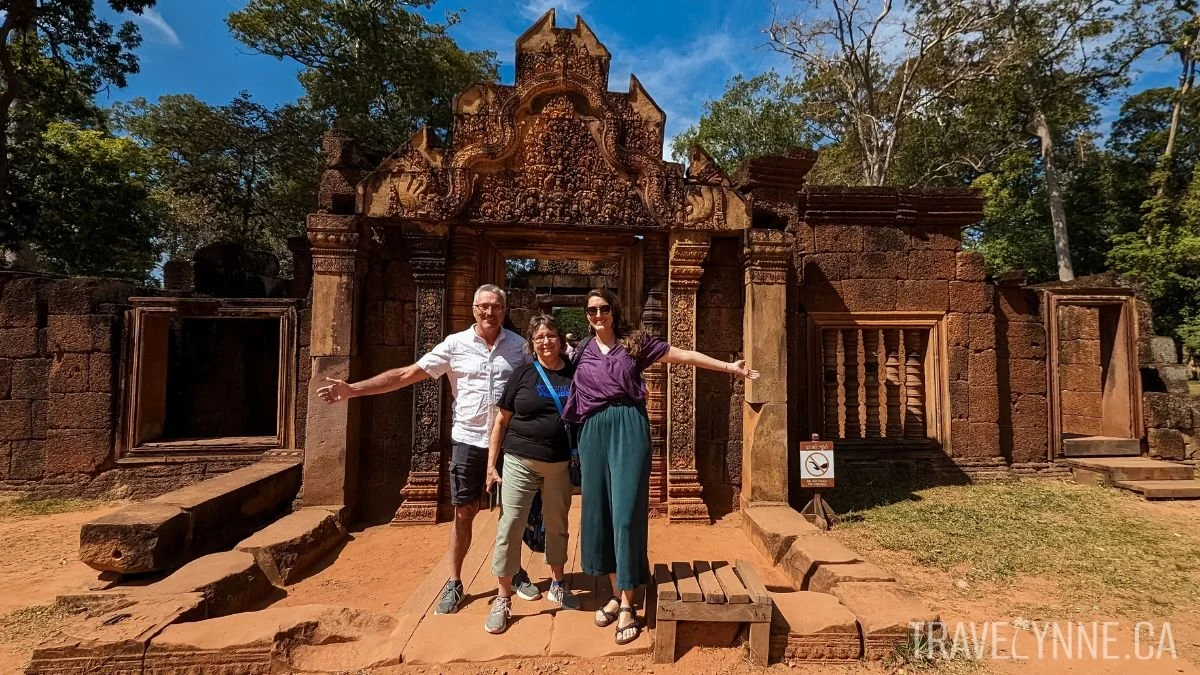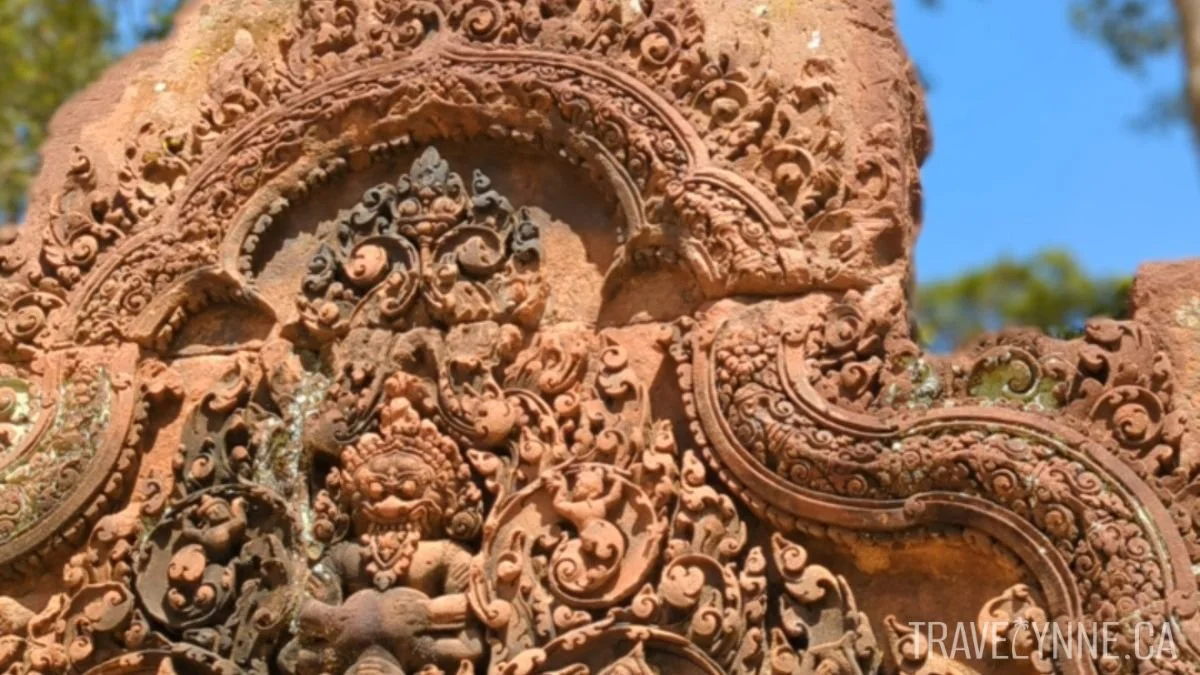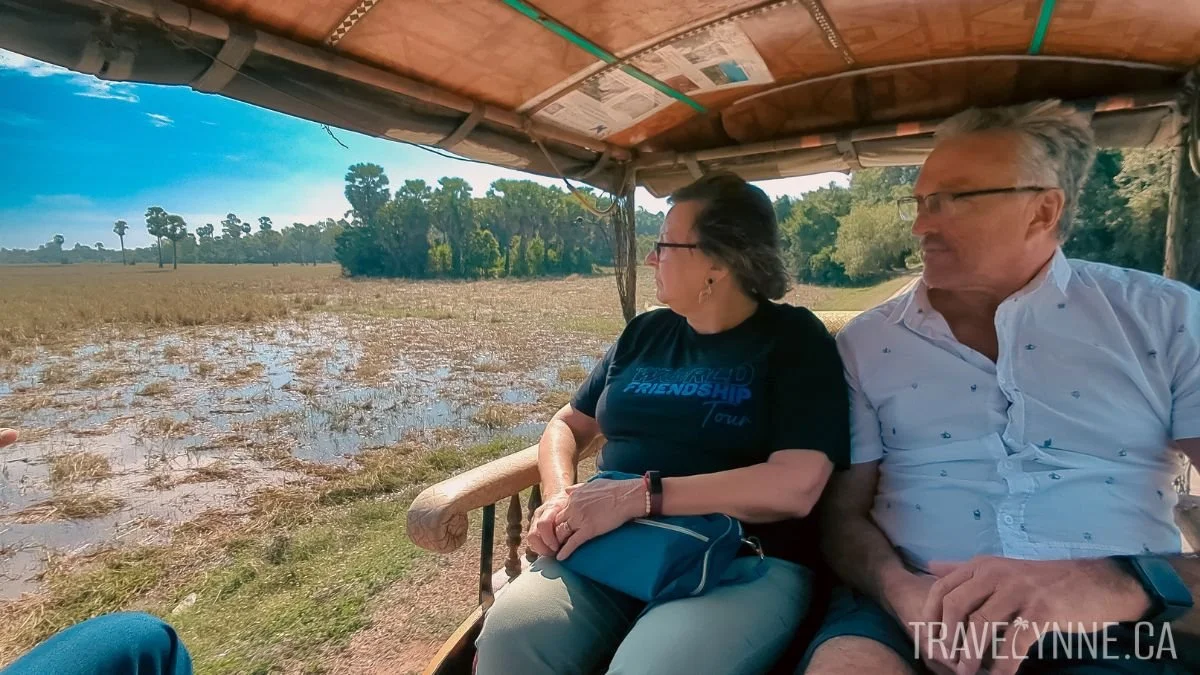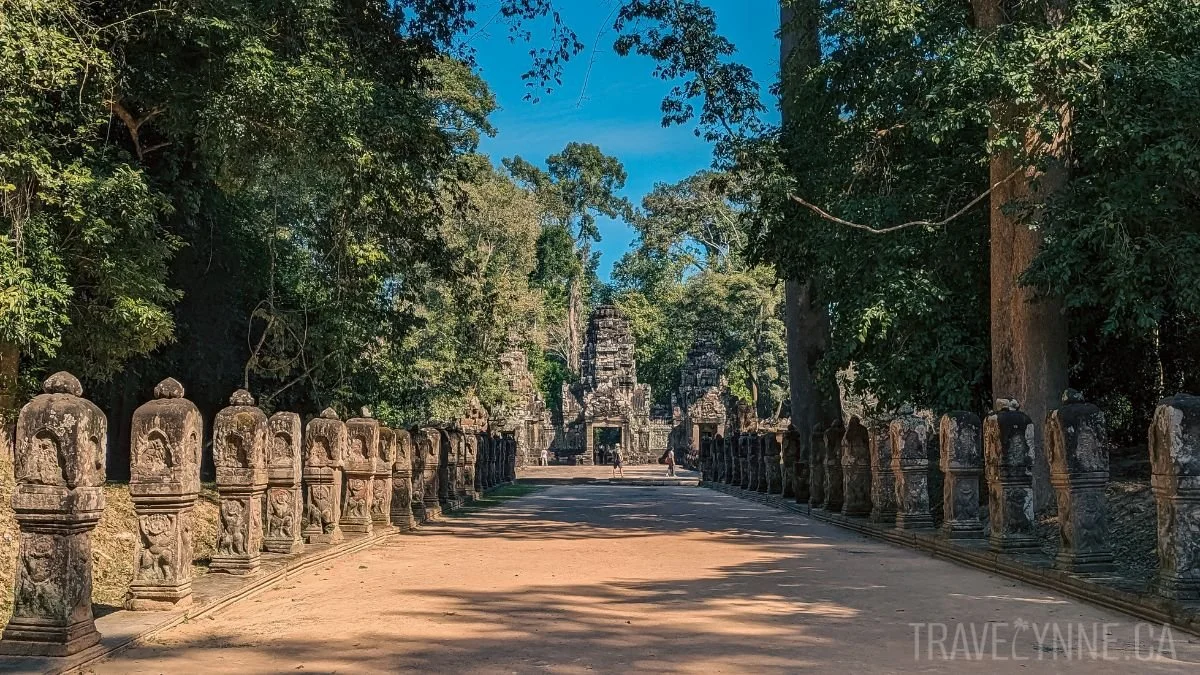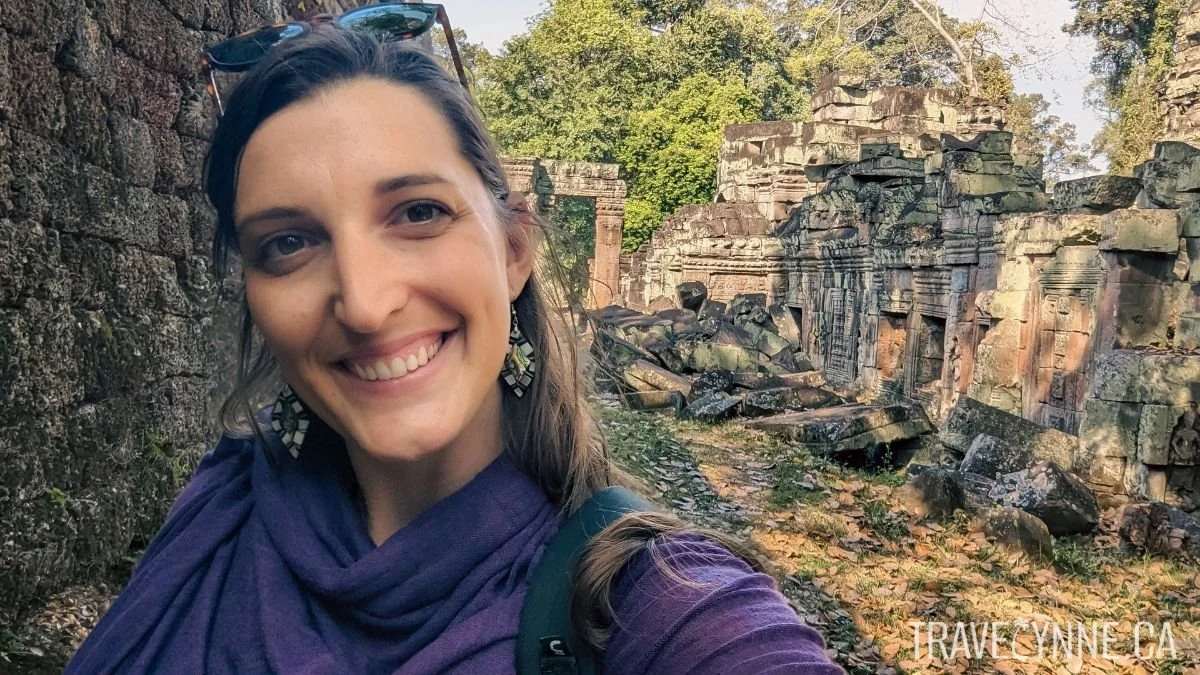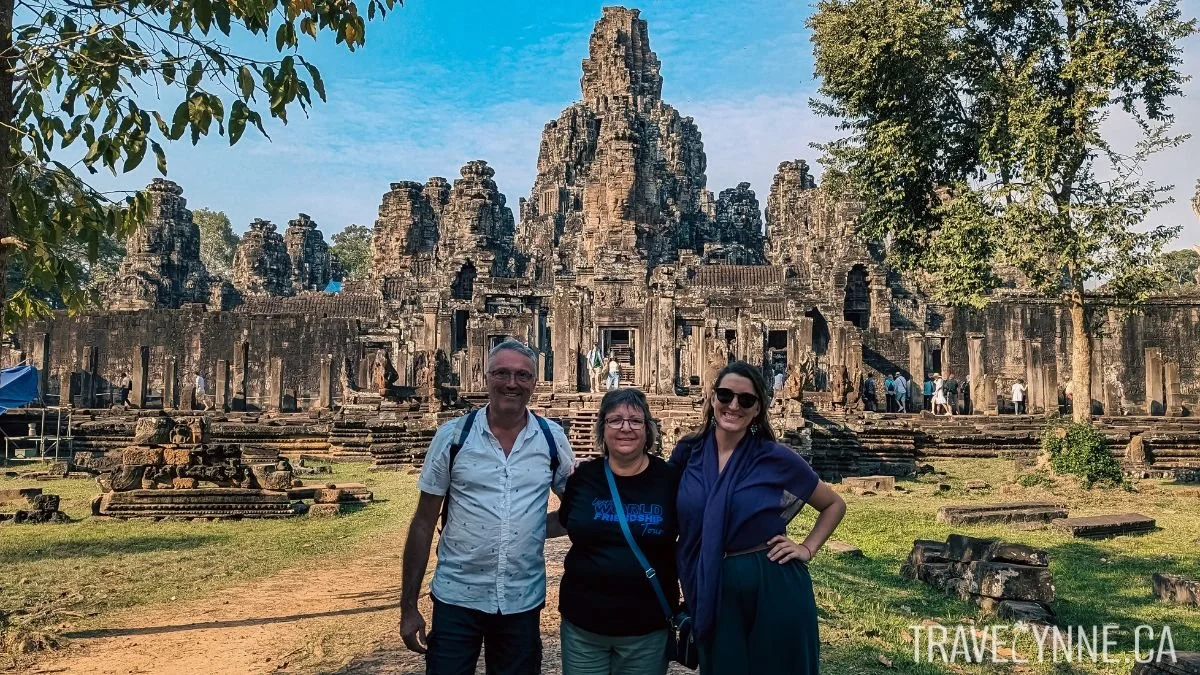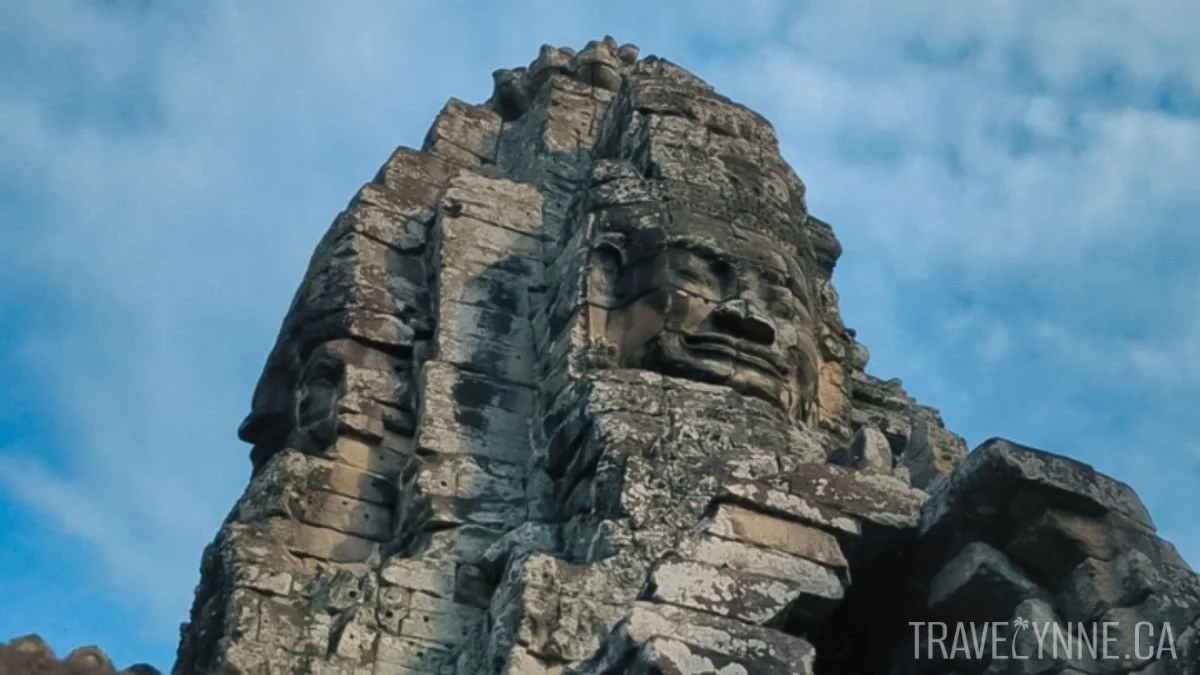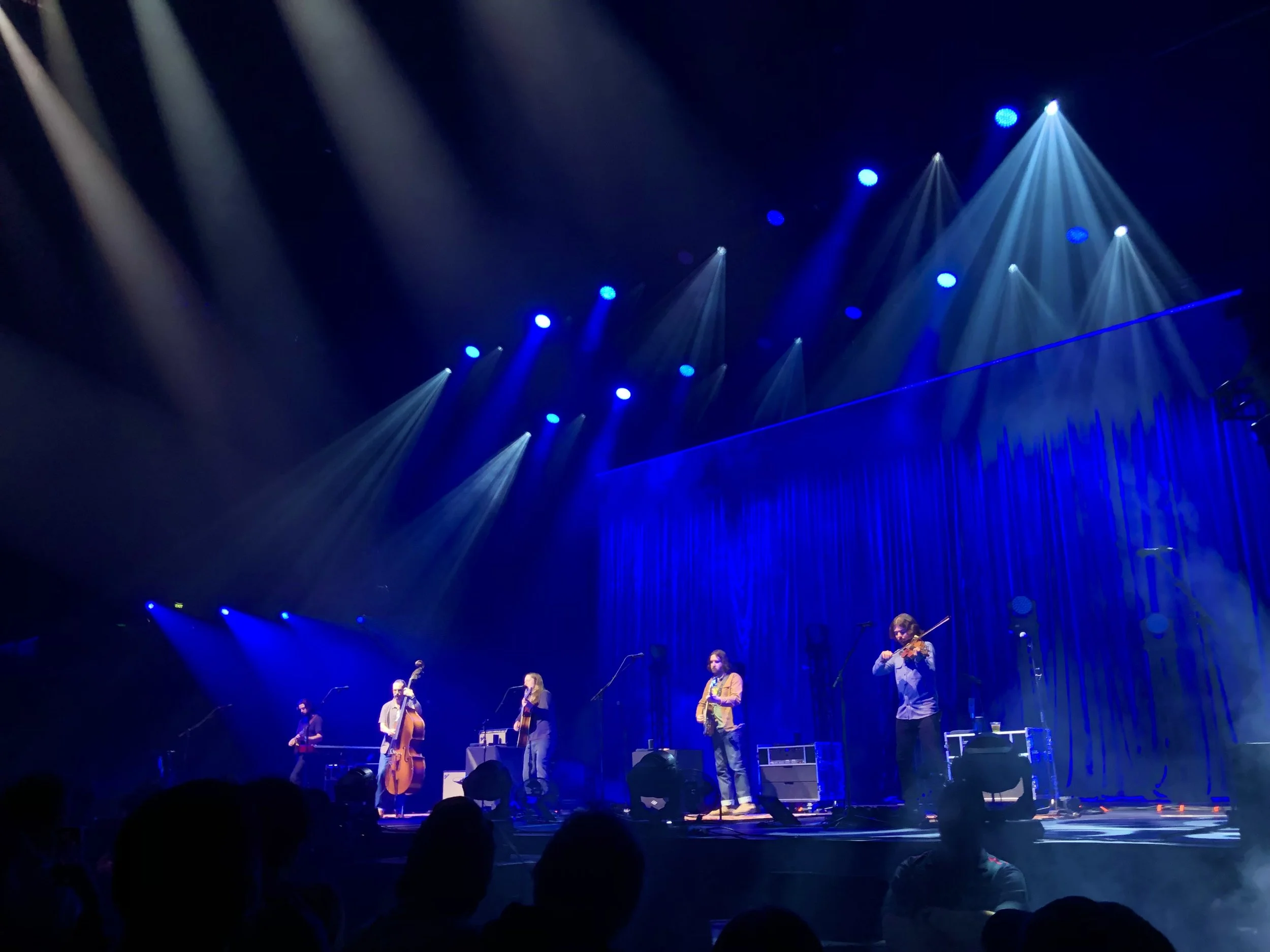48 Hours in Angkor Park: Explore the Best of Cambodia’s Ancient Marvels
Discover the wonders of Angkor Park in just 48 hours with this expert guide. From iconic temples to hidden gems, learn how to make the most of your limited time. Let’s plan your unforgettable visit to Cambodia!
If you’re planning to visit Angkor Archaeological Park in Cambodia, I hope you’re ready to have your heart captured. This sprawling complex of ancient temples and ruins has mesmerized travellers for generations — including my parents and me… and about 2 million visitors every year.
The park covers the remnants of former Khmer empires over a 400km² radius - so there is a lot to see! But don’t worry because it's definitely possible to experience the highlights of Angkor in under 48 hours.
In this guide, I’ll show you how to make the most of your short visit, from the iconic temples of Angkor Wat, Ta Prohm and Bayon to lesser-known gems like Preah Khan and Banteay Srei.
A brief history of Angkor
Angkor hosted the capital of the Khmer Empire from the 9th to the 15th centuries. Today, Angkor Archaeological Park is home to the remains of hundreds of temples and other structures that were built by Khmer rulers to showcase their power and religious devotion (Hinduism).
The city was abandoned and the temples were completely lost to the jungle, as seen in the tree roots and vines wrapped around the ruins today - until French explorers rediscovered some of the sites in the 1840s.
Today, the park is a UNESCO World Heritage site and a popular tourist destination that attracts millions of visitors each year.
Note that currently there is controversy about moving residents and their businesses away from Angkor Wat — so please be reminded to be respectful of the natural environment and the protection of ancient sites, and to be kind and generous with your local hosts.
When to go
You can visit Angkor Park at any time of the year. If you want to increase your chance of nice weather and clear skies, then the best time of year to visit is during the dry season, from November to April while the weather is typically dry and sunny, with lower chances of rain. Skies are generally clearest from December to February.
Then again, this popular touristic site will be most crowded during these times, so you could also consider travelling during a shoulder season if you prefer fewer people. Of course, there are never guarantees about how the weather will be or how many people there will be (usually a lot), so hedge your bets!
Getting your Angkor Pass ticket
This is important! You need to have tickets in advance to enter any Angkor Park site, and you cannot buy tickets at Angkor Wat or any other temple. You can only buy tickets online (with a valid photo), from the Angkor Park ticket office (~4km from Siem Reap), or via your tour provider.
If buying in person, as we did, note that all guests must be present for ticket purchase. You can pay in cash or by credit card. Our driver took us to buy our tickets at the sales office on the morning we started visiting the temples.
An Angkor Pass gives you access to the group of Angkor World Heritage sites, including Angkor Wat and many more, except Phnom Kulen National Park and Koh Ker, which we did not visit.
Angkor Pass Pricing*
1-day pass – USD $37 / CAD $50
3-day pass – USD $62 / CAD $85
7-day pass – USD $72 / CAD $98
*As of February 2023
Note: No charge for children under 12 years old. No group discounts. Extra fees apply for specialized commercial photography and videography.
If you only have two days, as we did, opt for the 3-day pass. While there is a lot to see and it’s all stunning, we were happy with two days of visiting archaeological sites. For those with more time, note that multi-day passes don’t need to be used on consecutive days. You have up to 10 days to use a 3-day pass and up to one month to use a 7-day pass.
All Angkor Pass tickets require a recent passport-style photo and tickets are non-transferable. This means you need to submit a photo for each guest when purchasing tickets online, or each guest must be present at the official ticket office to have their photo taken when purchasing.
Hiring a tour guide
I highly recommend joining a tour or hiring a tour guide on a daily or half-day basis. We were so happy to have someone to show us around and teach us about fascinating Khmer history as well as Hindu and Buddhist symbolism. It makes these ancient sites feel that much more impactful when you can understand their meaning.
You can find a tour guide on arrival or pre-arrange a tour below with GetYourGuide:
If you aren’t joining a group tour, you definitely need to hire a driver (I suggest a tuk-tuk!) to take you to various sites within this huge park. If you do this, hire a driver at a daily (or half-day) rate - it will be a reasonable price and save you a lot of time and stress. If you want to book a private tuk-tuk driver and/or driver at a daily rate, I can put you in touch with someone directly.
Note that tour guiding in Siem Reap is a regulated profession, so the standard of tour guides is relatively high overall and worth the price for private small groups - around $30 USD / $41 CAD for a day for a group of 3-4.
Total cost
The Angkor Pass isn’t cheap, but I promise it is worthwhile!
If you aren’t joining a group tour, here’s what you need to budget for two days at Angkor Park:
3-day Angkor Pass: USD $62 / CAD $85
Tuk-tuk driver: USD $20 / CAD $27 total per day
Tour guide: USD $30 / CAD $41 total per day
Tips: USD $5-10 / CAD $7-13 total per day
Lunch & water: USD $5 / CAD $7 per person per day
We split the tour guide and driver costs by three, so our total cost per person was USD $112 / CAD $152 for two days of exploring.
If you’re travelling solo, then this cost might be too prohibitive. You could either forego a guide and just have a driver and sim card for self-guiding, or you can join a group tour like this one with GetYourGuide for $22 USD plus entrance fees.
What to bring
Angkor Pass - you’ll have to show it often
Cash for food, drinks and tips (small bills are handy)
Modest clothing for entering temples
Comfortable shoes for walking and exploring uneven grounds
Sunscreen, hat & water - the sun is no joke here!
Smartphone and camera gear for some amazing photos
Itinerary: 48 hours in Angkor Park
While you surely could spend many days exploring, we were satisfied with two days to discover sites in Angkor Park. We’re glad we left time to spend in the quaint city of Siem Reap! Within the park, some of the most famous and iconic temples include Angkor Wat, Bayon and Ta Prohm, which have become popular tourist attractions and have been designated as UNESCO World Heritage sites. However, there are also many other lesser-known temples and structures throughout the park that are worth exploring.
This itinerary is based on my research as well as what our driver and guide proposed for our group (my parents and me) for a day and a half. I requested a bit of a slower pace because I don’t like running from one place to another - I like to explore and learn! Plus, it gets very hot in Cambodia, so you don’t want to be rushing around or overdoing it.
Here are some suggestions for those who only have two days to explore Angkor Archaeological Park.
Day 1
Wake up around 6:30 AM and have breakfast at your hotel in Siem Reap. Have your driver and guide meet you at your hotel lobby by 7:30 AM to make the most of the morning, before the sun gets too hot.
Start the day at Ta Prohm Temple. While driving to the temple, your guide can fill you in on some general Khmer history.
Ta Prohm Temple was the primary filming location for the 2001 film "Lara Croft: Tomb Raider" starring Angelina Jolie. It was built in 1186AD as a Buddhist monastery for 12,500 people, with a surrounding village of 80,000 people (source).
The way the trees and ruins have grown together here is spectacular! They say this is one of the temples of Angkor Park that looks the most like it was when it was discovered. It’s incredibly well preserved, so you can still see a lot of clear indications of how it was as a monastery centuries ago.
Next, it’s a long drive to Banteay Srei Temple, about 45 minutes away by tuk-tuk. This temple is unique for a few reasons, including its reddish colour and the fact that it is thought to have been built by women.
Banteay Srei, also written Banteay Srey, translates to ‘Citadel of the Women’ and the suspicion is that the carvings are so elaborate that they must have been made by the smaller, more delicate hands of women (source). This temple was built in the 10th century in dedication to the Hindu god Shiva.
Unlike the other temples we saw, Banteay Srei is made of red sandstone, a material that can be carved like wood, and that’s exactly what it looks like. This temple was probably the most detailed one we saw.
If you have time, I suggest a stop at the Cambodia Landmine Museum on the way back from Banteay Srei temple. The only reason we didn’t go was that I didn’t realize that it was on the way! So learn from my mistake and include a stop here. The museum is a non-profit organization supporting landmine risk education for young people in Cambodia.
On the other hand, if you only have one day in Angkor Park, this would be the temple to cut out. As beautiful as it is, the distance means you lose too much time to include it on a day trip.
By this point, it will already be afternoon and you’ll be hungry! You can get some lunch at a local restaurant across from your next stop, Preah Khan temple.
My only advice about lunch is, whatever you do, you have to try fish amok while in Cambodia! With flavours of turmeric and lemongrass, this slightly sweet curry dish is so underrated. If you don’t like fish, it’s usually also available with chicken.
After you’ve filled your belly and rehydrated, it’s time to get to your next stop: Preah Khan temple. I really enjoyed this one because it has a lot of actual ruins - as in piles of stones and remnants of rooms - and you can walk freely all over the grounds. It has an adventurous feel which I love!
Once upon a time, the 12th-century Preah Khan temple complex was a real force. It was essentially the epitome of a city and a Buddhist university accounting for around 100,000 people.
You may be getting tired by this point - the sun can be relentless - but hold on for one more temple. I promise it’s worthwhile!
It’s time to head into the heart of the ancient Khmer city of Angkor Thom. Your destination is Bayon Temple - perhaps the most famous after Angkor Wat. The funny story is that the name was meant to be “Banyan Temple,” for the great significance of Banyan trees in Buddhism, but workers restoring the temple after the French occupation mispronounced it as “Bayon” and this is the name they still use today!
Built in the 12th or 13th century, the most interesting part of Bayon Temple is the many huge Buddha faces carved into the towers. It’s a mesmerizing place!
If you aren’t exhausted by this point, you must be superhuman. It’s time to get back to your accommodation and rest up, maybe enjoy a dip in a pool before dinner, and then get to bed because you have a very early start tomorrow!
Day 2
Today you have one goal and one goal only: experience sunrise at Angkor Wat temple. Check the sunrise time with your guide - you’ll want to arrive at least 30 minutes before the sun will be up, but I would say 45 minutes is safer so you don’t miss the magic!
☀️ See my full guide with tips on experiencing sunrise at Angkor Wat
Angkor Wat is one of those places where you can feel completely immersed in history and beauty, so watching the sunrise here is very serene, especially if you’re lucky enough to witness firey orange skies as we did.
After sunrise, we loved learning about Hindu mythology with our guide while walking the corridors surrounding the main temple - the carved murals are amazing! Then, you can climb up the very steep and narrow stairs of the main temple for a perspective on the grounds.
Being as spectacular as it is, ending your visit with Angkor Wat is perfect. Angkor Park is all very impressive, but I think most other temples will pale in comparison once you’ve been here, so I suggest doing it last.
By the time you are done exploring here, it will likely be about 10 AM and very hot. Having already been up since about 4 AM, you’ll probably be hungry and ready for a nap!
Where to go next
Depending on your itinerary, you may be continuing to explore Angkor Park sites from here, or you may be heading back to Siem Reap.
If you can muster some energy, I have another (non-Angkor) stop to suggest nearby Angkor Wat. It’s the headquarters of a fascinating non-profit organization called APOPO. They are training rats to help detect landmines to keep kids, farmers and families safe in Cambodia, one of the countries most affected by the consequences of landmines today. Visitors are welcome for a tour and demonstration. I totally recommend this unique stop while you’re in the area - it costs just $5 per person!
If you’re headed back to town, I suggest lunch at The Little Red Fox, a cafe with delicious food where you can be assured staff are getting fair compensation and benefits.
By this point, after several packed travel days, we were completely wiped out and enjoyed the rest of our afternoon relaxing at the pool at Metta Residence & Spa. We were completely thrilled with our Angkor adventures!
Enjoy your trip to Angkor Park!
There are many gems in Southeast Asia, but I have to admit that Siem Reap and Angkor Archaeological Park are among my favourites.
With its intricate carvings, stunning architecture, and rich cultural history, it’s easy to see why Angkor is a UNESCO World Heritage site. It is a must-visit destination for anyone travelling to Cambodia or even Southeast Asia. Don’t miss out!
Did I miss something important? Do you have questions about visiting Angkor? I would love to hear from you!
HEADS UP: Some links on Travelynne are affiliate links, meaning I earn a small commission if you purchase select experiences from my links. This helps me invest more time and resources into creating helpful travel content like this article. Learn more about my offerings and how to support Travelynne on my booking page, where you can book tours, transportation and accommodations.


